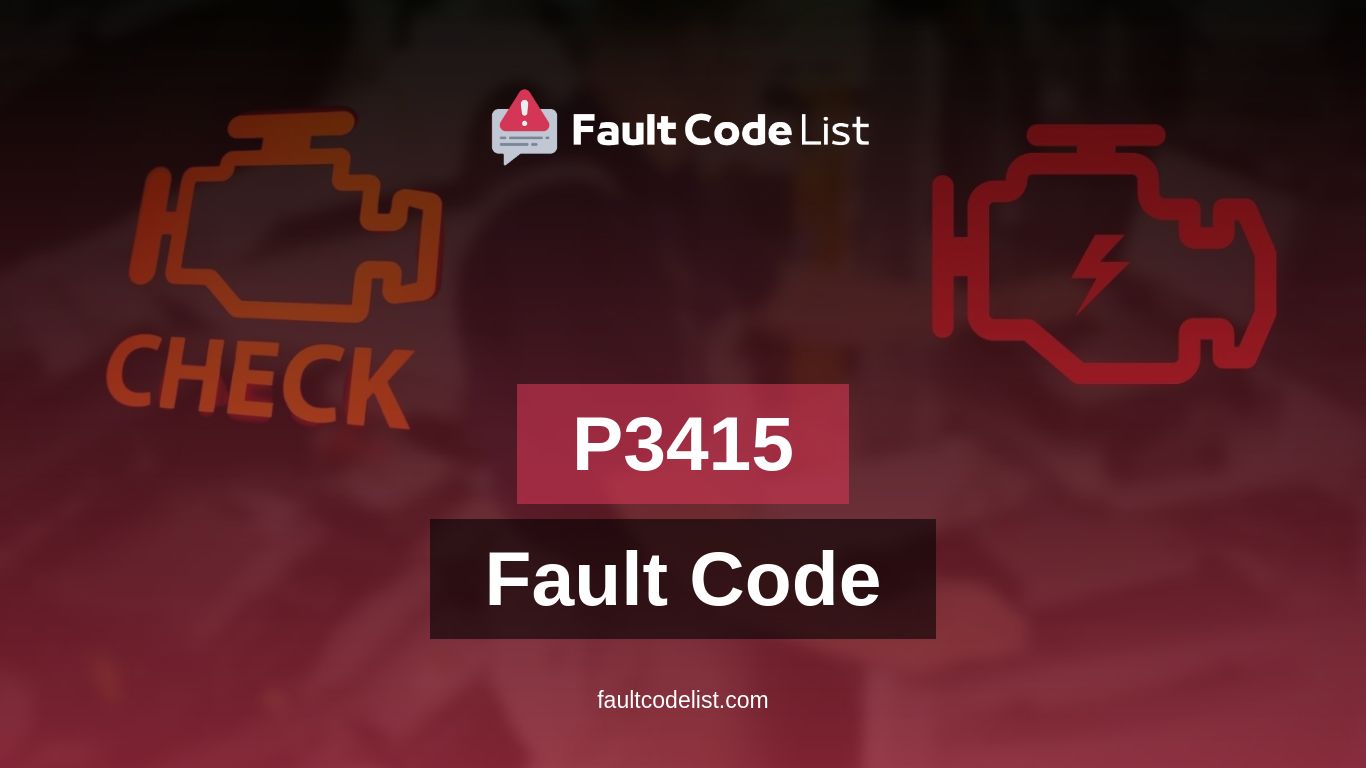Welcome to our comprehensive guide on the notorious P3415 fault code that afflicts car engines worldwide. In this article, we will delve into the causes, symptoms, and solutions of this enigmatic error code. If you’ve encountered the P3415 code, fret not, as we’re here to shed some light on this perplexing issue.
Causes of the P3415 Fault Code
The P3415 code, also known as the “Camshaft Position Sensor B Circuit Bank 2,” typically occurs due to a few common reasons:

- 1. Faulty Camshaft Position Sensor: A malfunctioning sensor can send incorrect signals, leading to the P3415 fault code.
- 2. Wiring Issues: Damaged or disconnected wiring between the sensor and the engine control module (ECM) can trigger this error code.
- 3. Engine Timing Problems: In some cases, incorrect engine timing can result in the P3415 code.
- 4. ECM Malfunction: Rarely, a faulty ECM itself can be the root cause of this fault code.
Symptoms of the P3415 Fault Code
Identifying the P3415 fault code can help car owners address the underlying issues promptly. Common symptoms associated with this error code include:
- 1. Illuminated Check Engine Light: The most apparent indication of the P3415 code is the illumination of the check engine light on the dashboard.
- 2. Engine Misfires: You may experience engine misfires or irregular engine performance when this fault code is present.
- 3. Rough Idling: A rough or unstable idling speed can be observed, potentially accompanied by vibrations or unusual noises.
- 4. Reduced Fuel Efficiency: The P3415 code may cause decreased fuel efficiency, leading to more frequent trips to the gas station.
- 5. Stalling: In severe cases, the engine may stall unexpectedly, creating potential safety hazards.
Solution for the P3415 Fault Code
Resolving the P3415 fault code requires a systematic approach to rectify the underlying causes. Here are some potential solutions:
- 1. Inspection and Replacement of Camshaft Position Sensor: Checking the sensor and replacing it if necessary is a common first step in rectifying this error.
- 2. Wiring Examination: Thoroughly inspecting the wiring harness and connectors can help identify any damaged or loose connections that may contribute to the fault code.
- 3. Engine Timing Adjustment: Ensuring the correct engine timing is crucial, and recalibration may be needed in some cases.
- 4. ECM Testing: If all else fails, the ECM should be tested to rule out any internal malfunctions.
Dealing with the P3415 fault code can be a daunting task, but armed with the knowledge of its causes, symptoms, and solutions, you’re better equipped to tackle this issue head-on. Remember, regular maintenance and prompt action can prevent further complications and keep your car running smoothly.
